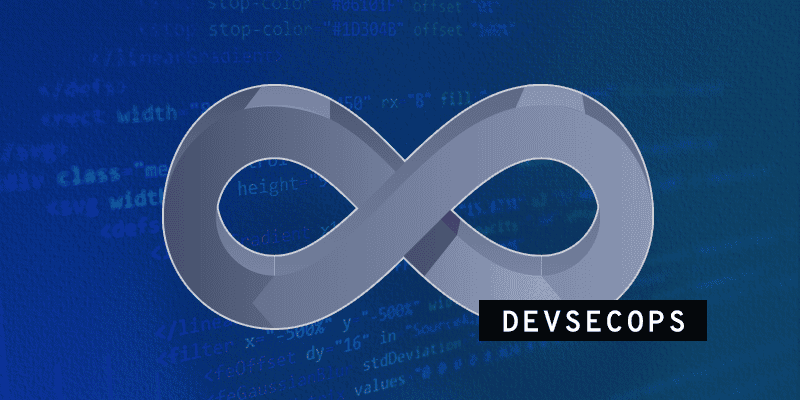Software updates and new service rollouts used to occur a few times a year. The span between releases could be months, which gave companies plenty of time to test their releases for bugs, security vulnerabilities, and more.
But like just about everything else in the business landscape, things have changed over the last decade. Release schedules have become shorter. The frequency of these updates has increased. The ability to quickly and efficiently address new problems and provide new solutions has become an essential aspect of business.
Timeliness of releases is important to competing in today’s market.
DevOps emerged in the late 2000’s to combine the practices of development and operations teams to speed up the release cycle. This has provided a series of benefits that have decreased the time between conceptualization and launching new developments.
But how has this increased speed of releases affected the security of these updates?
Data security has always been an important consideration for the world of technology. The increased prevalence of cloud computing has exacerbated the need for intentional security measures.

The pandemic has led to an increased reliance on remote work, cloud computing, and digital communication for many companies. These evolving digital trends have created vulnerabilities that continue to be exploited by cybercriminals.
Security measures are typically introduced at the end of the development cycle. Updates and releases are tested for potential security holes and performance issues upon completion. However, the speed of DevOps practices has caused these completed developments to pile up at the security stage.
How do you maintain the efficiency of DevOps while ensuring security concerns are addressed?
DevSecOps aims to do just that. But some might wonder how a business can maintain quality levels when spreading their attention to different considerations throughout the development process.
Let’s take a look at the essential aspects of DevSecOps:
What is DevSecOps?
DevSecOps is the combination of Development, Security, and Operations. These essential considerations were at one time addressed by separate, specialized teams.
Melding these considerations into a single practice provides a more complete and unified effort to produce quality updates and development projects with heightened efficiency.
DevOps has largely introduced the idea of combining development and operations considerations in an effort to streamline the production queue. But the increased cybersecurity threats necessitate an integrated security effort throughout the process as well.
This takes the form of automating and integrating security measures throughout the development pipeline.
No longer is it solely up to a dedicated security team to find and address potential security vulnerabilities. This responsibility is shared between IT, security, and development teams.
Exploiting security vulnerabilities is the sole focus of cybercriminals. It takes a near-constant effort to guard your updates and products.
What Are the Benefits of DevSecOps?

The main benefits of DevSecOps are increased security and speed within your development pipeline.
Security
Traditional development pipelines wait until the product is completed before running it through security checks.
Finding and addressing security issues early in the development process makes them quicker and easier to address—which also saves the company money.
Waiting until the end of the process to address security issues will lead to redundant work within your development team. Early fixes are more efficient and inevitably create a stronger final product.
Baking these efforts into the product early in the process inherently makes them more secure because extra security measures are being taken.
Speed
Searching for security vulnerabilities after a project is completed is more difficult. There is more code to examine. Analyzing and addressing these issues along the way means there is less information to sort through.
DevSecOps increases production speed because the delivered product has already undergone security checks, thus removing an entire step by making a final security check redundant.
Faster processes bring down the overall cost associated with a development project. It also shortens the available time window a cybercriminal has to act on vulnerabilities. This reduces the exposure and potential for cyberattacks.
How Do I Integrate DevSecOps Practices?
Incorporating DevSecOps practices can be a natural progression of your development cycle optimization by adding security considerations throughout your development and operational processes.
Managing DevSecOps is a combination of various considerations:
- Automation
- Orchestration
- Configuration management
- Secure computing environments
One important consideration is to institute automated security checks at various checkpoints.
Continuous integration/continuous delivery (CI/CD) has the ability to automate testing and confirm proper code structure as it’s integrated to the shared repository.
Not only will this assist with security measures, it also helps create stable software updates.
Automated processes are repeatable and can be scaled to new needs or operations. This helps ensure consistent levels of quality across various environments.
DevSecOps Best Practices
Every iteration of DevSecOps is going to be different. Businesses will have different needs, varied vulnerabilities, and differently-sized teams and operations.
However, there are certain aspects of a successful DevSecOps infrastructure that similarly benefit every company, no matter what their specifics may be.

Here are a few aspects to keep in mind when putting together a DevSecOps plan.
Shift Left
Imagine the development process as a timeline that begins on the left (initial planning) and moves right toward the end (product launch).
Shift left is a term that is often used to describe the mindset of DevSecOps. It refers to the process of moving security measures from the right side of this timeline (the end) to the left (the beginning).
Security measures should be a consideration from the very start of your development pipeline. A development team that keeps security considerations in mind from the outset of the process will produce a product with less security vulnerabilities.
Cross-Department Education
As we said earlier, DevSecOps is the combination of development, security, and operations. This will often involve efforts from members of these various teams.
It is essential that everyone—across all departments and teams—is very clear on their role in this process, as well as possessing a solid understanding of the process as a whole.
Every team member that touches a project should be aware of the basic security considerations and understand why they are put in place, and why they are important. This includes factors such as:
- Application security
- Testing
- Risk assessment
- And more
Open Communication
Working across team lines can create confusion. Open lines of communication between team members of various sectors within your company is essential.
Strong and clear leadership is a very important factor in this consideration.
Developers, engineers, security and compliance professionals—everyone needs to understand their responsibilities as well as those of their peers.
This creates a customized workflow that gives each team member a sense of ownership and responsibility within the development pipeline.
Team members that are more invested in the outcome will be motivated to ensure its success.
Accountability
- Auditability: There needs to be a system in place to verify the validity of security measures taken by all members of the team. A well-documented system is essential to regulatory compliance considerations.
- Visibility: You need to know when changes and cyberattacks occur. Frequent reports, alerts, and monitoring practices need to be in place.
- Traceability: Changes and implementations should be tracked. This will reduce bugs, assist compliance, and help maintain the stability of your code.
